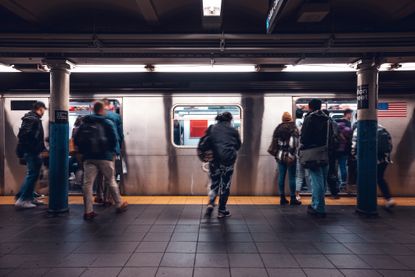The New York City commute is about to get marginally more expensive, as the Metropolitan Transportation Authority (MTA) is raising the price of a subway ride for the first time since 2015.
An individual subway or bus swipe is increasing by a little over 5%, from $2.75 to $2.90, according to the MTA. Meanwhile, a weekly unlimited pass is increasing from $33 to $34 (3% increase) and the 30-day pass is going from $127 to $132 (4% increase). Students and seniors, who get discounted rates at half off base fare, will see an individual swipe go from $1.35 to $1.45.
This is set to be in effect by Aug. 20.
Additionally, fares on the Long Island Rail Road (LIRR) and Metro-North are going up by 4.5%, although the MTA notes: “Thanks to the additional 10% discount implemented in March 2022, monthly fares will remain lower than they were pre-COVID.”
It’s not looking much better for drivers. E-ZPass tolls on bridges and tunnels just increased from $6.55 to $6.94, according to NBC New York, and out-of-town drivers are uneagerly anticipating the start of surge pricing, with an expected rollout in spring 2024.
Did you know that the cost of taking a ride on the NYC subway is on the rise? Yep, it’s true! The prices for these beloved underground journeys are creeping up, and it’s causing quite the buzz among commuters and city dwellers. But fear not, my friend, as I’m here to provide you with all the juicy details about this recent development. So, hop on board and let’s dive into the intriguing world of subway fare increases in the concrete jungle of New York City!
Living in New York, it’s only natural for me to want to complain about the rising subway fares. However, as a New Yorker, I also feel a sense of duty to stick up for our subway system and defend it against all its detractors. Surprisingly, the MTA might have a valid argument for increasing the prices.
During a recent conversation with my family, we delved into the topic of escalating prices. It was intriguing to hear my father recollect his adolescent years in Brooklyn when he could comfortably pay less than a dollar for various goods and services. In contrast, my sister shared her own memories of riding public transport in college, where the fare still hovered around $2. This exchange illuminated the significant price disparities over time and left us pondering the factors contributing to this fascinating phenomenon.
So, we pulled up the stats and ended up with some interesting measures. In the last half of the 1970s, a subway ride was $0.50, according to 6sqft. Now, using the Bureau of Labor Statistics’ CPI inflation calculator, $0.50 in January 1979 has the same buying power as $2.23 in June 2023 (the most recent data available). In that sense, for someone like my dad, the price of the subway has definitely increased faster than inflation.
But the story changes for younger and newer New Yorkers. When I first moved to New York in 2010, a subway ride was $2.25. That’s the same buying power as $3.17 in June 2023, per the BLS calculator. So for me, the price of a subway has actually gotten significantly lower when you factor in inflation. The last rate hike was to $2.50 in March 2015; that would be $3.23 in June 2023.
Let’s put it this way: imagine that a slice of pizza in New York City cost more than a subway ride. Well, believe it or not, that’s precisely what happened last year, breaking the so-called “pizza principle.” It’s like turning the world upside down, right? The principle that guided our understanding of prices has been thrown out the window.
I’m pretty sure that this increase in fare prices is going to squeeze our budgets even tighter. However, I actually think it’s a fair and reasonable change. Since 2020, fewer people have been using public transportation, which means less revenue for maintaining and, hopefully, bettering our subway system. This fare hike is expected to contribute towards addressing some of these financial needs.
I really will defend the subway system to any non-New Yorker or new New Yorker who comes out swinging, because it’s kind of a spectacular thing. Yes, there are sometimes delays, and yes, it smells terrible and there are rats. But it’s a 24/7 system that generally functions, and it’s a little miracle to be able to fully cross boroughs relatively quickly for less than $3. Plus, using public transportation instead of a car is generally good for the environment.
Whenever I hear about the prices going up for public transportation, it can really frustrate me. But then I stop and think about how it’s still way more affordable than taking a taxi. And let’s not forget how much better it is to rely on buses and trains instead of dealing with the hassle of owning a car just to get around.
